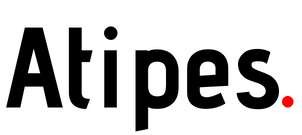This guide is intended to introduce you to proven best practices that will help you maintain the financial health of your small business.
From clear invoicing terms and automated systems to understanding how Bacs payments work in the UK, we cover practical tips that have helped many businesses like yours solve their cash flow problem. Start.
1. Apply clear payment terms
The first tip is to set your expectations from the start.When you provide a service or product, make sure the customer knows exactly when you expect to be paid. This will help avoid misunderstandings later.
You can choose a 30-day period or even request immediate payment; it all depends on what best suits your business model. Clear communication is essential here to maintain cash flow in your business and prevent the accumulation of bad debts.
2.Encourage prompt payment
This is quite simple. Think of it as a reward for good behavior! If a customer pays their bill early, give them a small discount. This offer incentivizes them to speed up payments and help you get your money back faster.
For example, you can offer terms like “2/10 net 30”, where customers get a 2% discount if they pay within 10 days instead of the usual 30 days.Paying early can actually help you manage your cash flow and finances more effectively.
3. Comply with BAC principles
BAC, or Bank Automated Clearing Service, is the framework that governs the electronic transfers of funds between banks in the UK. Complying with these principles can be as simple as knowing what Bacs payments mean and how it works.
Simply put, Bacs payments involve transferring money from one bank account to another electronically.It usually takes three business days: day 1 to send, day 2 to process, and day 3 to transfer to the recipient’s account.
Following these rules is essential as they ensure safe transactions and ensure that both parties have enough time to manage their finances within this time frame. Most importantly, by knowing how Bacs payments work, you can plan for approximately three days of waiting and ensure that your cash flow won’t be affected by unexpected delays.
4. Use an automated payment system
The reality is: manual payments are time-consuming and can lead to potential errors. As a small business owner under time pressure, you want to avoid this.
This is where the automated payment system comes into play. These tools definitely help you save valuable time because you no longer need to create and track invoices manually. They also reduce the risk of human error that can lead to late payments.
Picture this: automatically scheduled invoices for existing customers, predefined reminders for unpaid invoices – all handled without your constant intervention! It streamlines your financial processes, improves receivables tracking, and facilitates timely receipt of cash, which is important for maintaining healthy business finances.
5. Consider factoring options
Cash flow problems are common in small businesses, we know it. But if they happen more frequently and are more problematic, factoring may be worth considering. So what exactly is factoring? Factoring involves selling your receivables (invoices) to a third-party company called a factor.
Your supplier pays you a lump sum upfront for these invoices, usually between 70 and 90% of their total value. When your customer pays the fee, this element collects the payment. Yes, this means you get less money than if the payment was sent directly to you.
However, it also means quick payment in hand, which can be a lifesaver when a bill is due or the opportunity arises! So, if cash flow is tight and immediate liquidity is essential for the survival or growth of your business, factoring could be a realistic option.
6. Government Funding and Loans
During a financial crisis, it is essential to apply for available support, including government support. This support usually comes in two forms: grants and low-interest loans. The grant is essentially free money: you don’t have to pay it back. This can be a real blessing when you are struggling financially.Search for opportunities that fit your industry or business type.
Low-interest loans, on the other hand, are just that: loans with lower interest rates than traditional loans. Refund terms are also generally easier to manage. Both can provide timely cash to your business. But remember!Always consider grant or loan options with accompanying conditions and obligations. They should always align with your business’s goals and long-term viability.
That concludes our quick guide to cash flow management for small businesses! Now it’s your turn to put these tips into practice and keep that cash flow flowing. Remember, financial health is a journey, not a destination. So feel free to adapt these methods to best meet the unique needs of your business.
©Copyright 2023.All Rights Reserved.
Disclaimer : This advertisement and the information related to it are provided and maintained by the advertiser. Atipes.com is not responsible and can not guarantee the accuracy or completeness of this advertisement. Please note that every advertisement for rent or for sale should at a minimum, display the energy performance rating of the property. See our Flats and Housing Posting Rules for more information.
Avoid scams: Signs of fraud: wire transfer, money orders, cashier checks, payment via gift cards, shipping, escrow, "transaction protection", "guarantee". Be safe by dealing locally.

